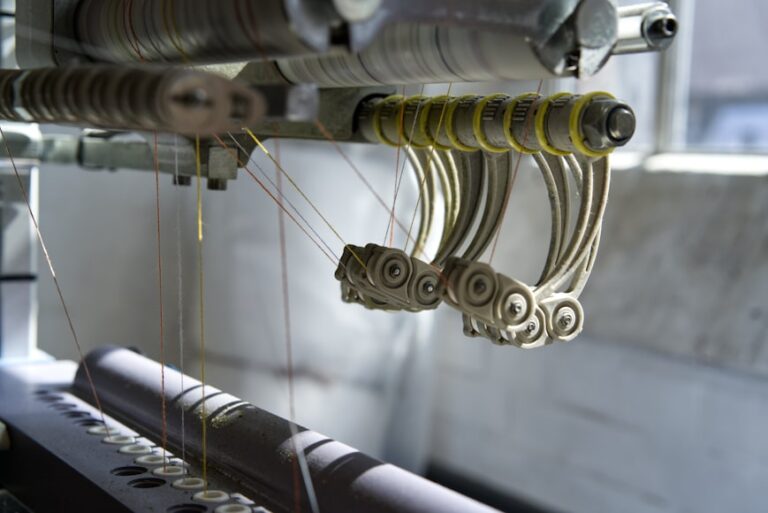Sustainability in fashion is no longer merely a passing trend; it is a pivotal movement fundamentally transforming the textile sector. The rise of eco-fabrics has introduced innovative ways to lower the ecological footprint associated with clothing production significantly. Companies are investing in technologies like those used for eco-fabrics to ensure their products are stylish and environmentally conscious. This shift towards sustainable materials is a critical response to pressing environmental issues and indicates growing consumer demand for greener products.
Historically, the fashion industry has been a significant contributor to environmental degradation. From water-intensive processes to substantial pollution, its impacts on nature are profound. As awareness of these impacts grows among consumers, there is a concerted push towards adopting eco-friendly textiles. This transformation is not just about conserving resources; it’s about redefining industry standards to align with ecological sustainability goals. Innovative technologies are emerging that preserve vital resources and respond dynamically to the increasing calls for sustainability in everyday consumer goods.
Introduction to Sustainable Textile Technology
The textile sector is undergoing a significant transition toward sustainability, propelled by the pressing need to tackle increasing environmental issues. Traditional textile manufacturing methods have long been criticized for their excessive use of resources and harmful environmental impact. To combat these issues, companies are innovating to reduce waste and conserve. In a world where climate change represents a significant challenge, adopting sustainable textile practices is no longer optional but an industry-wide necessity. Stakeholders throughout the supply chain, including suppliers, manufacturers, and designers, work collaboratively to integrate eco-friendly operations.
The Environmental Impact of Traditional Textiles
Conventional textile manufacturing processes, such as dyeing, spinning, and weaving, are notorious for their significant contributions to environmental pollution. The effect is unmistakably substantial, ranging from high water usage to the discharge of harmful substances into ecosystems. Textile dyeing and treatment processes account for about 20% of global industrial water contamination. Additionally, worsening the problem, the fashion sector accounts for as much as 10% of worldwide carbon emissions, exceeding those from aviation and shipping. Shift towards sustainable practices to alleviate these environmental effects and strive for a more accountable industry.
Innovative Materials in Fashion
A groundbreaking wave of innovative materials is leading the charge in reducing the fashion industry’s environmental impact. Eco-fabrics such as organic cotton, which significantly reduces pesticide use, and bamboo fibers, known for their rapid regeneration cycle, are gaining popularity. Additionally, recycled polyester, often produced from plastic waste, offers a sustainable alternative to traditional polyester. Such materials don’t just minimize the environmental footprint; they maintain the aesthetic and tactile qualities that consumers value. Innovations in material science make it increasingly feasible to turn these eco-friendly options into mainstream choices within the fashion sector.
The Role of Technology in Sustainable Manufacturing
Technology plays an essential role in facilitating sustainable textile manufacturing processes. Advanced technologies such as 3D knitting allow seamless garment production, significantly minimizing fabric waste and inefficiencies. Waterless dyeing technologies have revolutionized the process by eliminating the need for water, thereby considerably reducing water pollution. Digital printing technologies further advance sustainable manufacturing by enabling precise, on-demand production, which diminishes overproduction and material waste. These technological advancements foster the development of eco-friendly textiles without compromising on the aesthetics and durability that consumers expect, setting new standards in green manufacturing processes.
Consumer Trends Toward Eco-Friendly Fashion
The transition towards sustainable fashion is profoundly influenced by changing consumer trends. Contemporary shoppers are becoming more aware of the ecological impact of their buying choices, and they prefer brands that demonstrate openness and dedication to sustainability. This shift underscores a growing demand for ethically sourced and environmentally responsible products. Conscious consumerism compels brands to reevaluate and adapt their practices, placing increased emphasis on ecological sustainability and social responsibility. This trend reshapes the industry’s framework, driving a paradigm shift towards sustainability-focused business models.
Challenges and Opportunities in Sustainable Textiles
While the transition to sustainable practices offers numerous benefits, it also introduces several challenges. A primary concern is the financial strain of implementing new technologies and materials, which may be too costly for certain companies. Additionally, concerns about scalability remain a common theme. Nevertheless, these challenges present unique opportunities for innovation and collaboration. Industry stakeholders are exploring cooperative models, investing in research, and forming partnerships to make sustainable technologies more accessible. This evolving landscape opens doors for new business models prioritizing profitability while remaining environmentally conscious.
Future Prospects for Sustainable Innovations
The future of sustainable textiles is promising, as continuing advancements in technology and heightened consumer demand heavily influence the industry’s trajectory. Biobased materials crafted from renewable resources are increasingly celebrated for their potential to reduce environmental impact substantially. Closed-loop recycling systems aim to eliminate textile waste by incorporating fabric scraps into new materials, significantly reducing the industry’s reliance on virgin resources. As material science and production technology advancements progress, they continually shape a more sustainable fashion industry, harmonizing economic growth with ecological balance.
Additional Resources on Textile Sustainability
Resources are available for those committed to delving deeper into sustainable textile technologies. Academic journals, industry reports, and online courses provide comprehensive insights and catalyze a deeper understanding of sustainability efforts within the textile sector. Engaging with these materials can inspire further participation in sustainability initiatives, empowering stakeholders—from designers to consumers—to make informed and responsible choices supporting a sustainable future.

